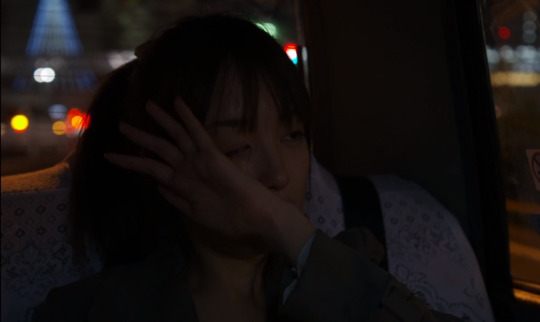#Like Someone in Love
Text

“Lately, I seem to walk as though I have wings. Bump into things, like someone in love. Each time I look at you, I’m limp as a glove and feeling like someone in love.”
— Like Someone in Love, Björk Debut (1993)
1K notes
·
View notes
Text





Like Someone in Love (2012) dir. Abbás Kiarostamí
#like someone in love#abbas kiarostami#gifs#filmedit#filmgifs#moviegifs#usertream#userfilm#fyeahmotionpictures#fyeahmovies#cinemaspam#cinematv#cinemapix
377 notes
·
View notes
Text







LIKE SOMEONE IN LOVE (2012) dir. ABBAS KIAROSTAMI
47 notes
·
View notes
Text



Rin Takanashi as Akiko in Like Someone in Love (2012) dir. Abbas Kiarostami
#rin takahashi#like someone in love#abbas kiarostami#worldcinemaedit#filmauteur#jdramasource#asiandramasource#japanese movie#ellisgifs#this film is so sublimely beautiful…… i ache#queue
89 notes
·
View notes
Audio
Björk | Like Someone In Love
Lately, I find myself out gazing at stars
Hearing guitars, like someone in love
Sometimes, the things I do astound me
Mostly whenever you're around me
Lately, I seem to walk as though I have wings
Bump into things
Like someone in love
Each time I look at you, I'm limp as a glove
And feeling
Like someone in love
57 notes
·
View notes
Video
youtube
J. J. Johnson - Like Someone In Love
Remembering the great trombonist J.J. Johnson (Jan. 22, 1924-Feb. 4, 2001) on the centennial of his birth.
#youtube#personal#music#jazz#jazz music#trombone#jazz trombone#J.J. Johnson#Great American Songbook#Like Someone in Love
18 notes
·
View notes
Text
youtube
14 notes
·
View notes
Text

Spinning some valentines music from Ella
6 notes
·
View notes
Text
i wanna draw cute ship fanart but i suck at drawing :,(
#wenclair#alice in borderland#wednesday x enid#yokovina#yoko x divina#gay#netflix wednesday#netflix#alice in borderland s2#like someone in love#and i think you two are adorable#but i can’t draw the scenarios i make in my head at 3am :(#honestly that’s very disrespectful#i used to be able to draw#but i stopped for like a month and now i can’t anymore#bcos my classes and i had like no time :((((#anyway mega respect for people who draw non canon ships from scary shows#thank you for your time
52 notes
·
View notes
Text
70 notes
·
View notes
Audio
7:40 AM EDT June 24, 2023:
Chet Baker - “Like Someone in Love”
From the album Chet Baker Sings
(1954)
Last song scrobbled from iTunes at Last.fm
File under:
Completely Unaffected and Ineffable Singing Voices
2 notes
·
View notes
Text

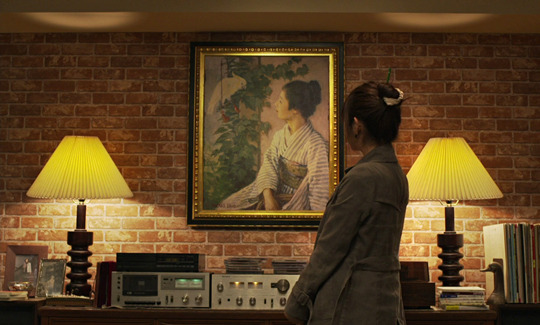

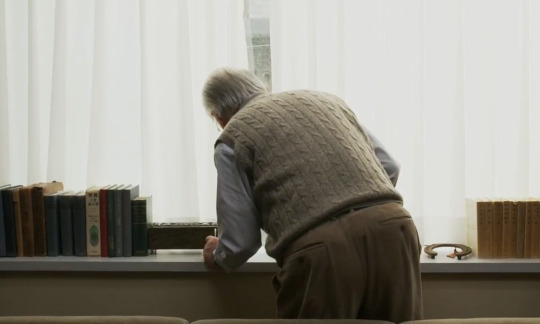
In the late 1990s Abbas Kiarostami was driving late at night while on a visit to Tokyo and witnessed a young girl on the side of the street dressed as a bride. In the years following, while visiting Tokyo to promote other films, he realized that he was always looking for that same girl because she had left such an impression but that he would never likely notice her again in real life because she wouldn't be wearing the same dress. This experience became the basis for the film. ❣️
13 notes
·
View notes
Text
On the Life and Work of Acclaimed Iranian Filmmaker Abbas Kiarostami
Speaking to critic and scholar Godfrey Cheshire ahead of the Belcourt’s Abbas Kiarostami: A Retrospective
CRAIG D. LINDSEY
OCT 10, 2019
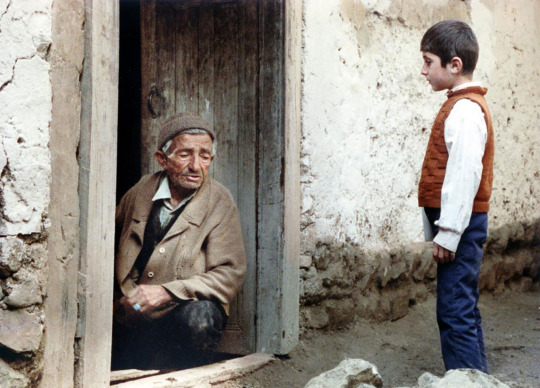
Where Is the Friend’s Home?
On Oct. 11, the Belcourt will host a two-week retrospective dedicated to the features and shorts of late Iranian filmmaker Abbas Kiarostami. This traveling tribute will feature 2K and 4K restorations of Kiarostami’s most poignant, most enigmatic, most essential work, including his acclaimed Koker Trilogy (Where Is the Friend’s Home?, And Life Goes On and Through the Olive Trees) and Taste of Cherry, the latter of which was awarded the Palme d’Or at the 1997 Cannes Film Festival.
And who better to talk with about Kiarostami than Godfrey Cheshire, the film critic/writer/filmmaker who knew him best? Quite possibly the foremost stateside authority on Iranian cinema, Cheshire (who has written for The New York Times, New York Press, Film Comment and RogerEbert.com) had a bond with the filmmaker that began back in the ’90s. The interviews they did over the years have now been collected in a new book, Conversations With Kiarostami. (He has another book, In the Time of Kiarostami: Writings on Iranian Cinema, scheduled for release next year.) Cheshire also served as a consultant on the retrospective, which — before coming to Nashville — showed in Los Angeles, New York City and elsewhere. He answered our questions via email.
OK, this retrospective. How did it come about, and how did you get roped into it?
In 2017, following Kiarostami’s death the previous year, the French company mk2 acquired the rights to almost all of his films and embarked on a two-year restoration project in collaboration with the U.S. company Janus Films/Criterion Collection. Ahmad Kiarostami, the director’s son, told Janus/Criterion that they should work with me because I’m virtually the only person in the U.S. who knows about the many films in the first third of Kiarostami’s career. That’s partly due to the interviews I did with him that are in my book. I have worked with Criterion on the DVD releases of Close-Up, Taste of Cherry, Certified Copy and the new Koker Trilogy box set.

Taste of Cherry
While I was reading your book, I was taken aback by how serious he was as an artist — but it seemed he could take or leave filmmaking. He said he wasn’t a big cinephile. There’s that story where he won the Palme d’Or at Cannes for Taste of Cherry and said he felt “nothing.” Considering his love for poetry and photography, what can you say is the thing that drove him to be a filmmaker?
I think filmmaking was his primary focus because it combined all of the qualities of the other arts and interests he had. It was visual and auditory, but also could be poetic, psychological, dramatic, philosophical and so on.
Kiarostami said there are Iranian filmmakers far more successful than he. In your opinion, what is it about Kiarostami that makes him such an emblematic figure in Iranian cinema?
When I first visited Iran in the late ’90s, I learned that many Iranians didn’t consider him their greatest director. I think he gradually became recognized as such when critics and audiences in other parts of the world embraced the films of his middle period, due to their very subtle and psychologically astute stories and distinctively poetic film language.
In the book, you break down his career into three periods: his work with the Institute for Intellectual Development of Children and Young Adults (better known as Kanoon), his Koker Trilogy/Masterworks period, and his experimental later-years period. What are the essentials from each period?
In the first period, you see an artist who has a very strong sense of a poetic kind of cinema (evident in his first four films, the shorts “The Bread and Alley” and “Breaktime,” the short feature The Experience and the feature The Traveler) and one who is also experimenting in various ways while mainly making films about children and teenagers. In the second period, he demonstrates a kind of mastery that has emerged from his earlier work while making films, mostly about adults, that continued to make artistic leaps. In the third period, it’s like he ceased to care about making masterpieces and returned to the more personal, low-key and experimental aspects of his first period. The experimentation here included making films in other countries and languages, Certified Copy (Italy) and Like Someone in Love (Japan).
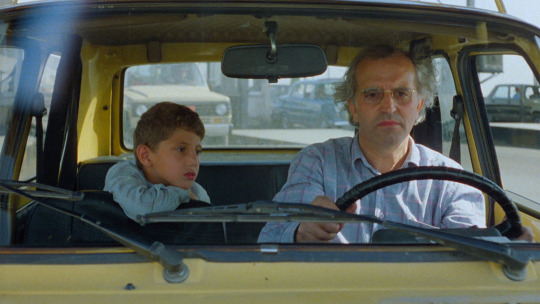
And Life Goes On
As you continued to explore Iranian cinema and continued your relationship with Kiarostami, did it start to become a kindred-spirit thing where both of you had the same mission — to show the most ambitious cinema Iran has to offer?
I think our friendship, which began in 1994 and continued until his death, was a kind of kindred-spirits relationship. It had to do with the fact that he realized that I’d studied his films in detail, but it also was just personal — I liked him and he liked me. I would say that I had (and have) a mission to tell people about the genius of Iranian cinema and culture, while his only mission was to continue doing work that he considered challenging and meaningful.
What would you like people to take with them after attending this retrospective?
Recently in New Orleans, I spoke with a renowned art curator who said: “In the art world, Warhol was the last giant. In cinema, Kiarostami is the last giant.” I think you can certainly say that he was the last cinematic titan of the 20th century, the century of cinema. At the beginning of the 1990s, probably no American critic had ever heard of him; at the end of the ’90s, American critics polled by Film Comment voted him the decade’s most important filmmaker. I think people attending the retrospective will see the evidence of a multifaceted artist whose distinctively poetic way of filmmaking places him in the company of such figures as Chaplin, Welles, Rossellini, Bergman and Kurosawa.
#Iran#Cinema#Godfrey Cheshire#Abbas Kiarostami#CRAIG D. LINDSEY#Where Is the Friend’s Home?#Janus Films#Koker Trilogy#And Life Goes On#Through the Olive Trees#Taste of Cherry#Criterion Collection#Ahmad Kiarostami#Palme d’Or#The Bread and Alley#Breaktime#The Experience#The Traveler#Certified Copy#Like Someone in Love#Chaplin#Welles#Rossellini#Bergman#Kurosawa.
6 notes
·
View notes
Text
EVERY SINGLE DAY there are MILLIONS of characters in their late 20s who get falsely accused of being father figures to teenagers when in reality the description of "weird older cousin" or "step-sibling that moved out before you were born" is 1000000x more apt
#talk tag#IT KILLS ME. REIGEN IS NOT MOB'S DAD. HE HAS A DAD. INGO IS NOT AKARI'S DAD. PLEASE FOR THE LOVE OF GOD CAN ANYONE HEAR ME#(not even necessarily to say that ingo is in his late 20s but still)#(even if he was a 30-40-50 year old no matter how old he is no fucking teenager is gonna call some guy they met as a 15 year old ''dad'')#GAI IS NOT A FATHER FIGURE TO ROCK LEE HE WAS LIKE 13 WHEN HE WAS BORN! PLEASE!!!!!!!!#one time i saw that a person wrote a fic where mario was like a father figure to luigi.#they are TWIN BROTHERS.#not what this about but idk where else i can say anything about this.#just horrible#also sometimes someone is just An Older Friend like no familial relationship just a friend or acquaintance who is a lot older than you
68K notes
·
View notes

